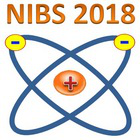Speaker
Dr
Haruhisa Nakano
(National Institute for Fusion Science)
Description
Degradations of ion source performance were found in deuterium operation of negative ion source for Neutral Beam Injector (NBI) on Large Helical Device (LHD): lower ion beam current efficiency for discharge power, higher electron current ratio to ion beam current and more intense Cs atom emission (related with sputtering) in the same Cs tank temperature operation. We changed pressure inside discharge chamber, bias voltage between arc chamber and plasma grid, Cs tank temperature (Cs seeding flux) and discharge duration (discharge chamber wall temperature) to optimize beam injection power to the LHD.
It is expected that these degradation and variation of optimal operation parameter from hydrogen to deuterium operations are associated to differences of negative ion yield efficiency on plasma grid surface covered by cesium, physical and/or chemical sputtering, and plasma parameter variation by ion mass. For the sputtering and plasma parameter variation, helium and helium mixed hydrogen discharges as well as pure hydrogen and deuterium are useful. Simultaneous several plasma parameter measurements are necessary to investigate the physical differences between hydrogen and deuterium operation in the large scale negative ion source for fusion. Experiment is performed with National Institute for Fusion Science-Research and development Negative Ion Source (NIFS-RNIS) which is the most suitable ion source for this experiment because NIFS-RNIS was the same type of the negative ion source for NBI on LHD. And NIFS-RNIS has many diagnostics: movable Langmuir Probe (ne, Te and Vs profile), movable cavity ringdown technique (nH- profile), millimeter wave interferometer (ne), multi-channel laser absorption spectroscopy for cesium atom (nCs distribution), optical emission spectroscopy (hydrogen, deuterium, helium and cesium emission). We will present the differences among hydrogen, deuterium, helium mixed hydrogen discharges in NIFS-RNIS.
Primary author
Dr
Haruhisa Nakano
(National Institute for Fusion Science)
Co-authors
Dr
Katsunori Ikeda
(National Institute for Fusion Science)
Prof.
Katsuyoshi Tsumori
(National Institute for Fusion Science)
Dr
Kenichi Nagaoka
(National Institute for Fusion Science)
Dr
Masaki Osakabe
(National Institute for Fusion Science)
Dr
Masashi Kisaki
(National Institute for Fusion Science)
Dr
Shuji Kamio
(National Institute for Fusion Science)
Mr
Yasuaki Haba
(Nagoya University / National Institute for Fusion Science)
Dr
Yutaka fujiwara
(National Institute for Fusion Science)

